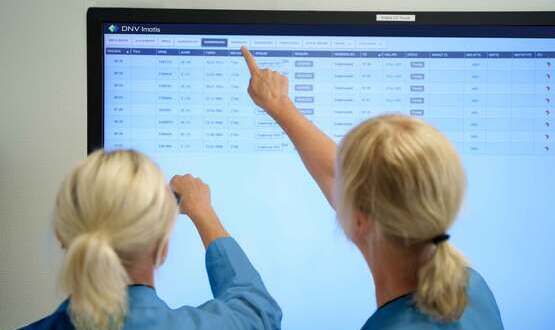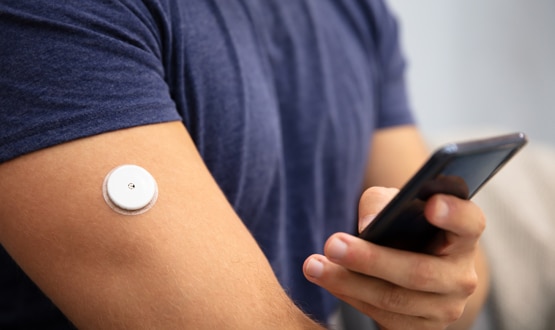Gareth Baxendale: can wearables count for medicine?

Health wearables are now ubiquitous and are disrupting almost every field you can think of. According to sparkpe.org, even the humble school PE lesson is adopting the use of wearables to help kids appreciate the link between physical exercise and their daily lives.
So could these inexpensive, consumer focussed devices be used to inform medical professionals in a clinical setting? There is already a marked increase in their adoption for clinical trials.
A quick search of the US clinicaltrials.gov registry for Fitbit, Garmin and FuelBand will return a significant number of trials that are focussed on collecting data using consumer-level devices.
However, when it comes to primary, secondary or social care settings, it would appear that they remain firmly rooted in the proof-of-concept stage.
The regulatory issue
One reason is that while health apps are available via various app stores, almost all are unapproved from a regulatory perspective. Indeed, a lot carefully state in the small print: ‘This product is not a medical device’.
The NHS ran an app store, and is working on a new, four-stage approvals process for apps; but it hasn’t led to any apps being approved, yet. The Medicines and Healthcare Regulatory Agency regulates apps that are medical devices: but see above.
From the opposite direction, vendors of medical grade wearables are looking to the ‘Internet of Things’ for low cost, low powered devices that can monitor patients outside of hospital walls.
Philips, for example, operates a cloud service called HealthSuite which is an open platform that collects, compiles and analyses clinical and other data from a wide range of devices and sources, and then shares it with a care team in real time.
How accurate are they really?
Health wearables these days come fully loaded with GPS, accelerometers, gyros, pressure sensors, heart rate monitors and environmental sensors. Quite frankly, they know more about what's going on than you do, especially if it was, in fact, a late one at the pub.
Despite this, another reason for the relatively slow take-up of apps in healthcare is concern about how accurate these wonderful gadgets really are.
In 2015, the Center for Behavioral Cardiovascular Health at Columbia University Medical Center ran a trial with 23 healthy, adult participants with an age range of 20–54 years and a body mass index range of 19.6–29.9 kg/m2.
The participants completed a four-stage treadmill exercise protocol consisting of walking at slow (1.9 mph), moderate (3.0 mph), and brisk (4.0 mph) paces; and jogging (5.2 mph). Two devices were tested, a clip-on hip device and a wristband device.
The Fitbit devices worn on the hip accurately measured steps taken within one step of 100% accuracy, while those worn on the wrist showed they were off by around 11 steps per minute.
The report also showed that when measuring the number of calories burned, Fitbit devices worn on the hip underestimated by an average of 6% while devices worn on the wrist overestimated calories burned by 21%
The study concluded: “Our study shows that the [Fitbit] reasonably and reliably estimate step counts and energy expenditure during walking and running (two of the most common activities among primary care patients); with the hip-based Fitbit outperforming the wrist-based Fitbit.” Which in plain language probably translates as: “pretty good.”
Back to the regulatory issue
Popular vendors such as Fitbit, Strava, Nike and JawBone offer a bewildering array of health wearable devices.
Your choice will tap you into the respective ecosystem where you can monitor, record and even win coveted virtual badges for your achievements – such as climbing the height of Everest or walking the length of the Great Wall of China.
You can also choose to share your data with other providers or expose it to other third-party apps. But you will, essentially, find yourself locked into that ecosystem.
This matters when it comes to moving forward on the regulatory front, because commercial organisations will need to be transparent about how their software and hardware operates, how the measurements are achieved and their accuracy, backed by credible scientific evidence.
Security around how data is collected and secured both at rest and in use is a key area of focus, as is the ability to allow a patient to be informed and provide appropriate consent as to how their data is used especially where additional parties are involved.
There are also some key issues to resolve around accountability. For example, who would be responsible for a problem occurring where more than one vendor was involved?
If a health wearable and its associated app is produced by one party and feeds data into a second party’s ecosystem and is then used by clinicians to manage a patient, who is liable for any issues – such as a missed alert or missing data?
Bridging the gap
In an attempt to reduce the gap in the health research space, Apple has launched a new development called ResearchKit and the associated CareKit – an open-source software framework to create apps and to use wearables for medical research.
ResearchKit is clearly a step forward in standardising a methodology that regulators could perhaps use to approve both wearables and the apps that support them in a health research setting.
ResearchKit supports the process of recruitment by taking potential participants through an eligibility process and provides digital consent as well as feedback and survey information.
The NIHR Clinical Research Network is currently exploring opportunities that such technologies offer as a way to on-board patients into clinical trials run within the NHS and support qualitative and quantitative patient feedback.
Stepping forward
So, while GP’s are unlikely to be prescribing consumer wearables any time soon, it is clear that pace and adoption of health wearables and apps is growing. Eventually, they will need to meet the standards of approved medical devices likely out of necessity.
Regulation will be a must and it may well be then that the adoption of a regulated framework for health wearables will have to be mandated at the government level.
In the meantime, there is no question that health wearables and apps do in fact educate people about the link between physical exercise and their daily lives. They can even motivate a person to lose weight, exercise more and feel better about themselves; which has to be a good thing all-round.
About the author: Gareth Baxendale is head of technology for the NIHR Clinical Research Network and a chartered fellow of BCS The Chartered Institute for IT. In addition, he is vice chair of the BCS Health Executive and an editor of the Journal of Innovation in Health Informatics. Follow him @BaxendaleGareth




